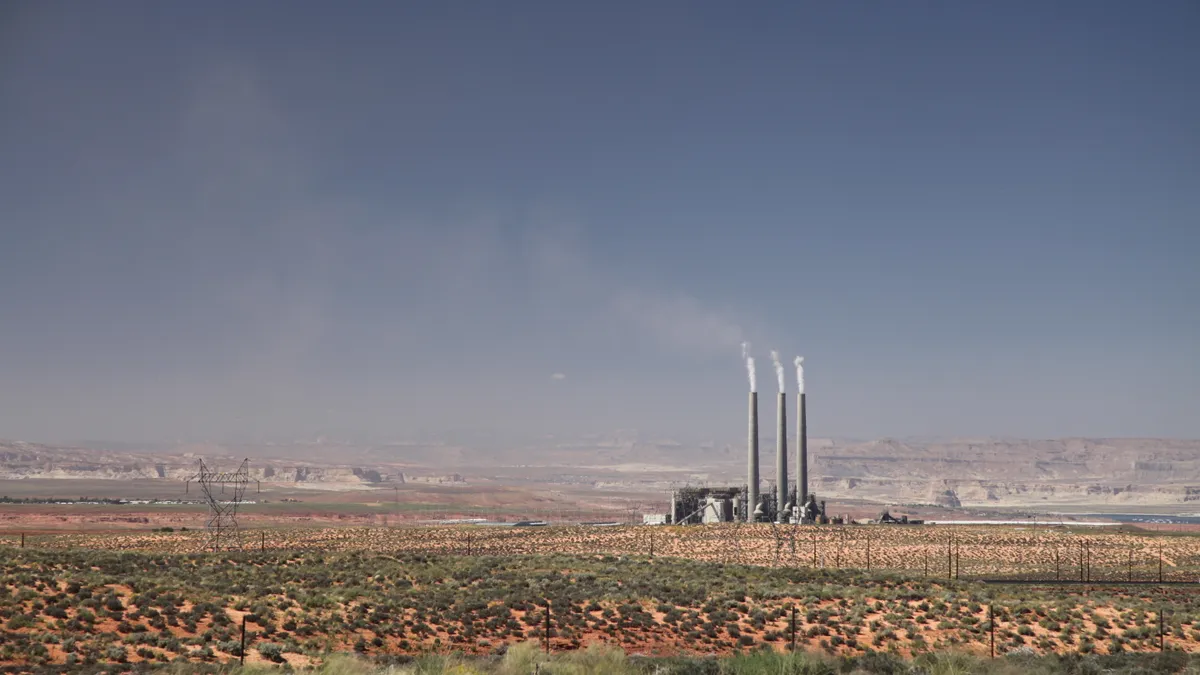Dive Brief:
- The largest coal plant in the Western United States will keep operating through 2019 after its owners received approval from the federal Bureau of Reclamation and Bureau of Indian Affairs to extend its lease on Wednesday.
- The plant's owners, including Reclamation and a group of utilities, had planned to close the 2,250 MW Navajo Generating Station (NGS) in 2018. The Navajo Nation, which owns the land on which the plant sits, voted to extend its lease until 2019, but needed final approval from the federal agency.
- Arizona utility Salt River Project (SRP) and other owners still plan to shutter the facility after its lease expires, citing competitive pressures from cheap natural gas. The Navajo Nation and coal supplier Peabody Energy are working to find a new owner for the plant.
Dive Insight:
In February, SRP and other NGS owners voted to close the plant by the beginning of 2019. Wholesale power prices are already cheaper than power from the 1970s-era coal plant, they said, and NGS's costs are only expected to increase in the years to come.
Last year, the National Renewable Energy Laboratory issued an analysis that pegged the cost of power from NGS at $38/MWh, compared with $32/MWh in 2015. After 2019, that cost will rise to $41/MWh, reflecting terms of a new lease, and then $51/MWh in 2030 due to the need to comply with emissions standards (provided they are not rolled back by the Trump administration).
Wholesale power prices in the Southwest, by contrast, averaged between the mid-teens and mid-20s in terms of dollars per megawatt-hour over the past year, according to EIA data.
NGS is a major employer in the Navajo Nation, providing about a thousand jobs, and a large consumer of coal from miner Peabody Energy. The two entities and the Trump administration pressed the utility owners to keep the plant open, with the Nation offering to renew the current NGS lease for one year.
Federal authorities approved that lease Wednesday, SRP announced, allowing the Nation and Peabody more time to find a new buyer for the coal plant. The Bureau of Reclamation currently owns about a quarter of the NGS plant, while SRP claims 43%. Arizona Public Service, NV Energy and Tucson Electric Power own the remaining shares.
Peabody is keen to find a new owner, as NGS is the sole consumer of coal from its Kayenta mine located on Navajo Nation land. Last month, Peabody said it had identified interested generation companies and private equity firms, but did not release details on their identities.
The mining company also funded a study released this month claiming that NGS is essential to power reliability in the Southwest. Arizona utilities, which are in charge of power reliability in the state, have not identified similar issues with its potential closure.
If new owners do not materialize, NGS backers may again go to the federal government for assistance. The coal plant would not qualify for cost recovery under the Department of Energy's recent coal subsidy plan — which applies only to merchant plants — but in May, an Arizona utility regulator wrote to Interior Secretary Ryan Zinke asking the federal government to pick up half of NGS's maintenance costs, hoping to keep the plant running for decades longer.













